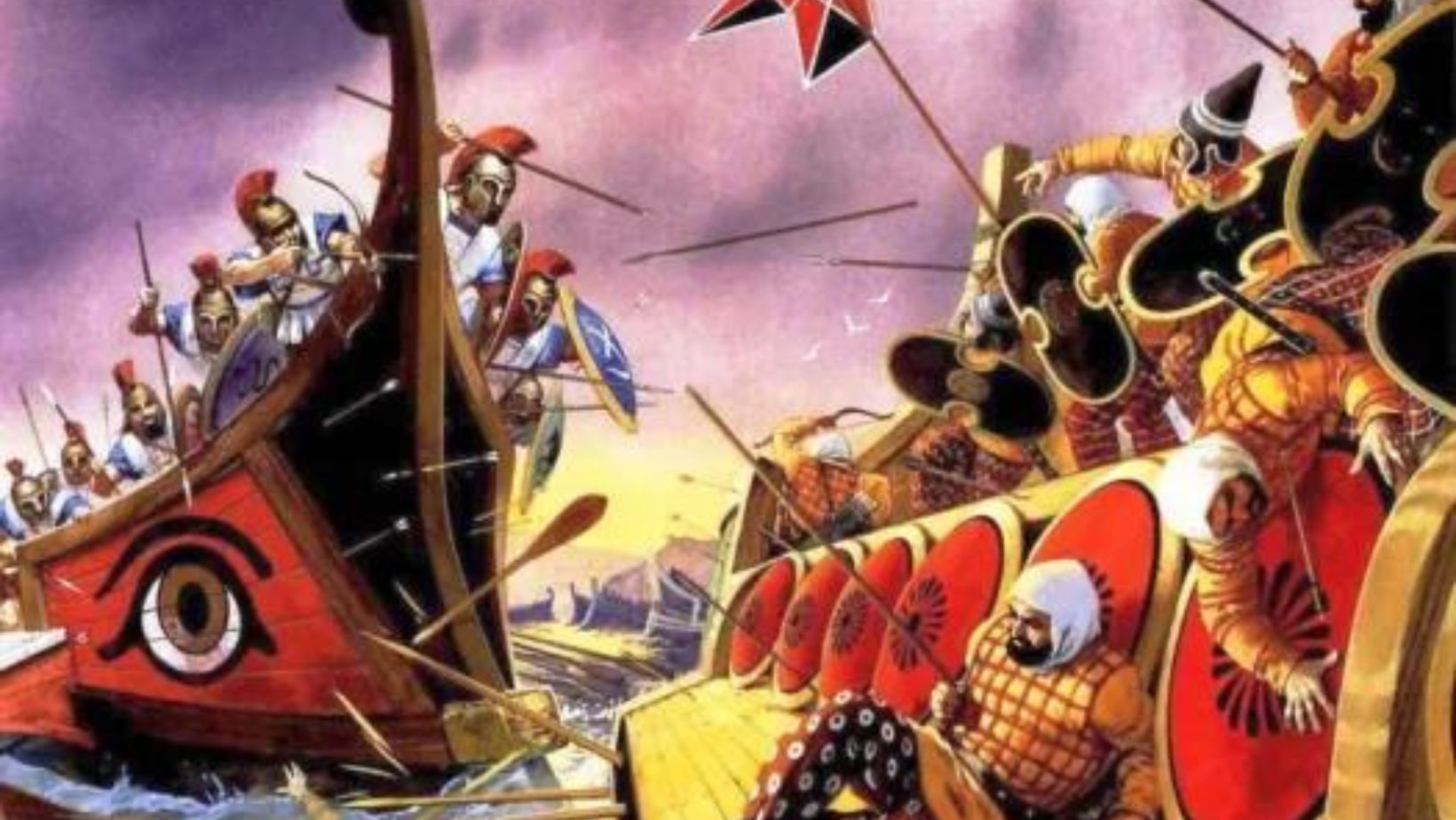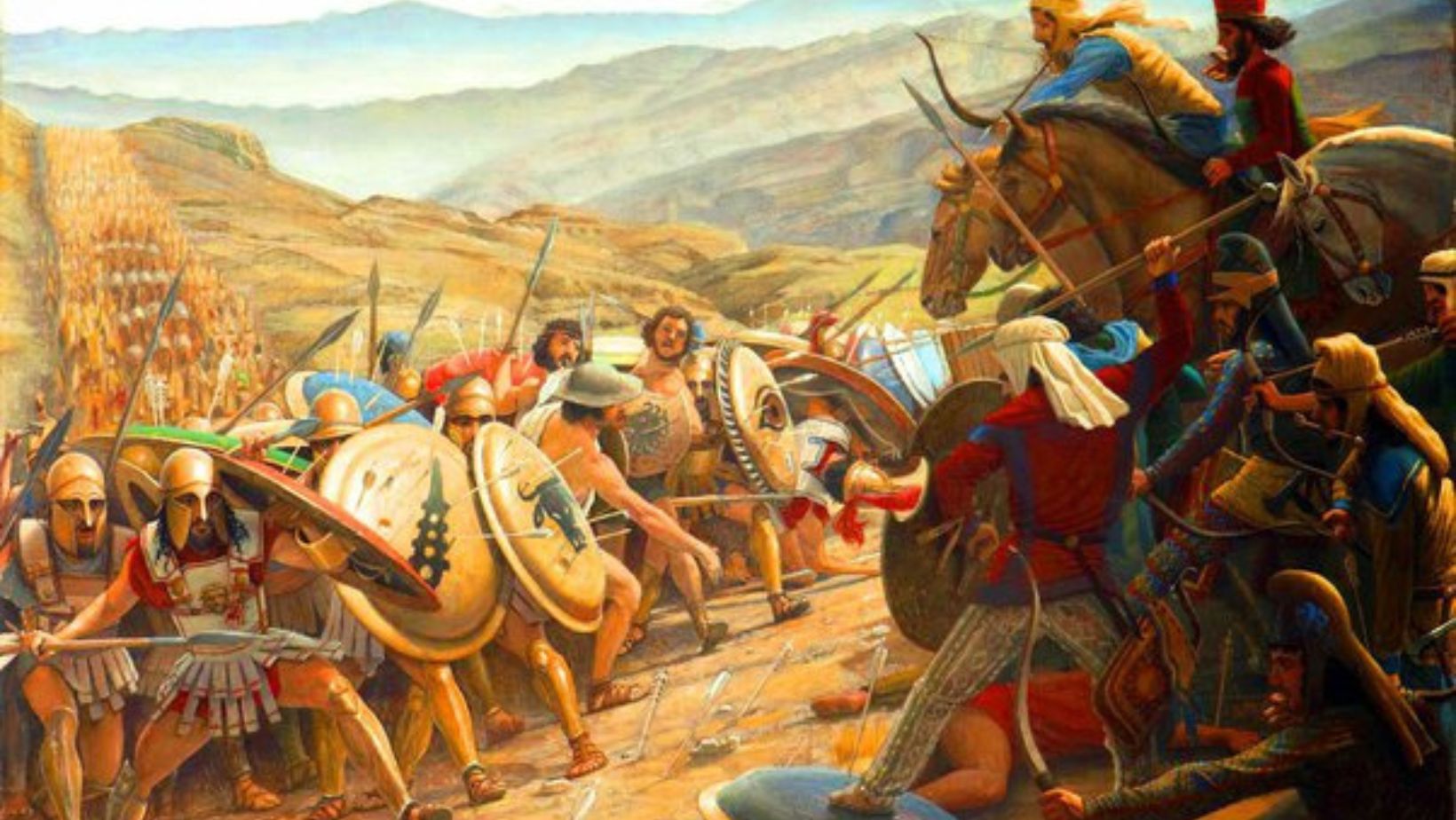When we talk about monumental clashes that have echoed through time, the naval battles of Xerxes stand out as colossal confrontations on water. These weren’t just skirmishes; they were full-blown dramas at sea, complete with cunning strategies and bold heroes facing off against overwhelming odds. From Artemisium to Salamis Island, every encounter was a testament to human courage and ingenuity.
The stakes? Nothing less than the freedom or subjugation of Greece under Persian rule. Imagine fleets clashing in narrow straits where each move could lead to victory or disaster.
Table of Contents:
- The Battle of Artemisium: Prelude to Salamis
- The Battle of Salamis: Turning Point of the Greco-Persian Wars
- Themistocles: Architect of the Greek Naval Strategy
- The Persian Invasion: Xerxes’ Quest for Vengeance
- Greek Ingenuity vs Persian Might: Tactics and Technology
- Conclusion
The Battle of Artemisium: Prelude to Salamis

The Battle of Salamis was a turning point in the Persian Wars, but it didn’t happen in a vacuum.
Before this epic naval battle, there was a crucial prelude – the Battle of Artemisium.
The Greeks Arrive at Artemisium: The Naval Battles of Xerxes
The Greeks advanced to Artemisium, anchoring their fleet there.
Meanwhile, the Persian fleet had arrived at Aphetae, just across the strait.
The Persians had superior numbers, but the narrow channel would work to the Greeks’ advantage.
The Persians sent 200 ships to bottle up the Greek fleet in a flanking maneuver.
But a Greek ship discovered the movement and reported back.
The Greeks met the flanking Persian ships and defeated them.
The Final Engagement: The Naval Battles of Xerxes
The next day, the Persians attacked the Greek fleet with everything they had.
The Persian Empire had superior numbers, but the Greeks had the tactical advantage.
The Athenian squadron pretended to retreat, then turned suddenly on the Persians, ramming and sinking many Persian ships.
The main Greek fleet then attacked, and the Persians suffered heavy losses.
Battle of Artemisium
The Battle of Artemisium was a draw.
The Persians couldn’t break through the Greek fleet, but the Greek fleet was too small to defeat the Persians.
The Greeks had bought time, but they would need to defeat the Persians at sea to prevent the conquest of Greece.
This set the stage for the decisive Battle of Salamis.
The Battle of Salamis: Turning Point of the Greco-Persian Wars
The Battle of Salamis was a make-or-break moment for the Greeks.
If they lost here, the mighty Persian Empire would roll through Greece unchecked.
But against the odds, the Greeks pulled off a stunning victory that changed the course of history.
Prelude to the Battle of Salamis: The Naval Battles of Xerxes
Themistocles urged the Athenians to abandon Athens and retreat to Salamis Island.
He argued the “wooden wall” mentioned in a prophecy referred to their fleet, and engaging the Persians at sea was their best hope.
Many were reluctant, but with the Persian invasion approaching, they agreed.
The Fleets Engage
King Xerxes set up his command post on Mount Aegaleus for a good view of the battle.
The Persian fleet entered the narrow strait between Salamis and the mainland, and the trap was sprung.
The Persians couldn’t maneuver in the tight space, and the Greeks rammed and sank many Persian ships.
The Aftermath of the Battle of Salamis: The Naval Battles of Xerxes
The Greek victory at Salamis was decisive.
The Persian fleet was crippled, and Xerxes had to withdraw much of his army.
The war would continue another year, but the threat of Persian conquest was ended.
Mainland Greece was saved, and the Greeks would go on the offensive.
Battle of Salamis: Conclusion
The Battle of Salamis was a turning point in the Persian Wars and ancient Greek history.
The underdog Greeks defeated a huge Persian fleet, leaving the Persian army exposed.
Xerxes retreated with much of his army, and never returned to Greece.
Although the war continued, Greece lay open to a flourishing of art, culture and democracy that would change the world.
Themistocles: Architect of the Greek Naval Strategy
The hero of Salamis was undoubtedly Themistocles.
His naval strategy won the battle and saved Greece.
Themistocles told the Athenians to rely on their fleet as a “wooden wall” against the Persians.
He convinced them to abandon Athens and retreat to Salamis, drawing the Persian fleet into narrow waters where Greek tactics would prevail.
Even when King Leonidas and his Spartans fell at Thermopylae, Themistocles held the Greek fleet together.
With the Spartan king dead and the Persian army advancing, central Greece lay open to Xerxes.
But Themistocles’ strategy lured the Persians into the narrow channel at Salamis, where the Greeks could attack the enemy fleet on their own terms.
When Xerxes took the bait and sent his fleet in, the Greeks sprang the trap.
Key Takeaway: The Naval Battles of Xerxes
The Greeks turned the tide of war at Salamis with smart tactics and Themistocles’ bold strategy, showing even a smaller force can win against huge odds.
The Persian Invasion: Xerxes’ Quest for Vengeance
By now (about mid-480) the Persians had assembled a multinational army that patriotic Greek historians such as Herodotus reckoned at two million or so.
Most modern historians disagree, placing Xerxes’ army at around 180,000 to 200,000, which was still a mighty host for the period.
The Great King also had a huge fleet at his command which Herodotus numbered at 1,207 warships and three thousand transport vessels.
Xerxes held a persian council to decide whether to risk a sea battle against the Greeks.
All but one argued for battle, knowing it was the king’s inclination. Only Artemisia, the Carian queen, opposed it.
She showed the dangers of engaging a people far more skilled in maritime affairs. Losing the naval battle would spell defeat for the entire persian invasion, she argued.
But by attacking the Peloponnesus instead, they would divide the Greeks, who would then separate to defend their respective states. Persia could then conquer Greece piecemeal.
Her life was expected to be forfeit for opposing the king. But Xerxes took it good-naturedly and gave orders to follow the majority.
And the Western world as we know it, built upon Greek foundations, may never have come to be. The stakes could not have been higher.
Xerxes set up a golden throne on Mount Aegaleus to have a commanding view of the battle.
The persian king knew the Greeks had lost many ships in prior battles. Surely his huge fleet would overwhelm them now.
But he failed to account for two things: Greek ingenuity and the leadership of Themistocles.
Greek Ingenuity vs Persian Might: Tactics and Technology

The Athenian squadron, led by Themistocles, pretended to retreat in the face of the Persian onslaught. Then they turned suddenly and rammed the enemy ships.
In the tight confines of the strait, the Persians could not bring their superior numbers to bear. They were fighting at a disadvantage.
The nimble Greek triremes, with their bronze rams, wreaked havoc on the Persian fleet. Confusion reigned as the Persians struggled to maneuver in the narrow channel.
A strong Athenian flank attack added to the chaos.
The main Greek fleet then launched an all-out assault on the vulnerable Persians. It was a daring and unconventional battle formation, but it worked brilliantly.
The Persians fought bravely, aware of Xerxes’ presence.
The lighter Greek ships could ram and disengage quickly. Their bronze rams tore into the Persian hulls with deadly efficiency.
A heavy swell further hampered the Persians, who were unused to the rough Aegean seas. Many could not swim, and drowned as their ships went down.
The Greeks took full advantage, pressing their attack relentlessly. Persian numbers counted for little that day.
Greek ingenuity had found a way to neutralize Persian might. Salamis was a triumph of brains over brawn, of innovative tactics over sheer numbers.
It proved that an organized, highly motivated, and technologically advanced force can defeat a far larger but less sophisticated foe. Even against seemingly impossible odds.
Key Takeaway: The Naval Battles of Xerxes
The Naval Battles of Xerxes. Artemisia warned against battling skilled Greek sailors, but Xerxes chose majority advice. His oversight of Greek ingenuity and leadership set the stage for a historic clash at Salamis, where clever tactics overcame Persian numbers.
Conclusion: The Naval Battles of Xerxes
In reflecting on the naval battles of Xerxes, it’s clear we’re not just talking about ships colliding in ancient seas. We’re diving into stories brimming with strategy, bravery – an enduring legacy left by those who dared face a mighty empire across tumultuous waves.
It wasn’t merely conflict; it was a display of what humans can achieve when pushed to their limits – innovation during desperation and unity against common threats.
This saga isn’t only about past glories but also offers lessons for today – resilience can turn tides.
And so, as we recount tales from eons ago, let’s remember the spirit shown amid roiling seas. After all, isn’t life itself much like navigating vast oceans?

